Max Kreminski
Can LLMs Generate Good Stories? Insights and Challenges from a Narrative Planning Perspective
Jun 11, 2025Abstract:Story generation has been a prominent application of Large Language Models (LLMs). However, understanding LLMs' ability to produce high-quality stories remains limited due to challenges in automatic evaluation methods and the high cost and subjectivity of manual evaluation. Computational narratology offers valuable insights into what constitutes a good story, which has been applied in the symbolic narrative planning approach to story generation. This work aims to deepen the understanding of LLMs' story generation capabilities by using them to solve narrative planning problems. We present a benchmark for evaluating LLMs on narrative planning based on literature examples, focusing on causal soundness, character intentionality, and dramatic conflict. Our experiments show that GPT-4 tier LLMs can generate causally sound stories at small scales, but planning with character intentionality and dramatic conflict remains challenging, requiring LLMs trained with reinforcement learning for complex reasoning. The results offer insights on the scale of stories that LLMs can generate while maintaining quality from different aspects. Our findings also highlight interesting problem solving behaviors and shed lights on challenges and considerations for applying LLM narrative planning in game environments.
Modifying Large Language Model Post-Training for Diverse Creative Writing
Mar 21, 2025Abstract:As creative writing tasks do not have singular correct answers, large language models (LLMs) trained to perform these tasks should be able to generate diverse valid outputs. However, LLM post-training often focuses on improving generation quality but neglects to facilitate output diversity. Hence, in creative writing generation, we investigate post-training approaches to promote both output diversity and quality. Our core idea is to include deviation -- the degree of difference between a training sample and all other samples with the same prompt -- in the training objective to facilitate learning from rare high-quality instances. By adopting our approach to direct preference optimization (DPO) and odds ratio preference optimization (ORPO), we demonstrate that we can promote the output diversity of trained models while minimally decreasing quality. Our best model with 8B parameters could achieve on-par diversity as a human-created dataset while having output quality similar to the best instruction-tuned models we examined, GPT-4o and DeepSeek-R1. We further validate our approaches with a human evaluation, an ablation, and a comparison to an existing diversification approach, DivPO.
Phraselette: A Poet's Procedural Palette
Mar 08, 2025Abstract:According to the recently introduced theory of artistic support tools, creativity support tools exert normative influences over artistic production, instantiating a normative ground that shapes both the process and product of artistic expression. We argue that the normative ground of most existing automated writing tools is misaligned with writerly values and identify a potential alternative frame-material writing support-for experimental poetry tools that flexibly support the finding, processing, transforming, and shaping of text(s). Based on this frame, we introduce Phraselette, an artistic material writing support interface that helps experimental poets search for words and phrases. To provide material writing support, Phraselette is designed to counter the dominant mode of automated writing tools, while offering language model affordances in line with writerly values. We further report on an extended expert evaluation involving 10 published poets that indicates support for both our framing of material writing support and for Phraselette itself.
Patchview: LLM-Powered Worldbuilding with Generative Dust and Magnet Visualization
Aug 07, 2024Abstract:Large language models (LLMs) can help writers build story worlds by generating world elements, such as factions, characters, and locations. However, making sense of many generated elements can be overwhelming. Moreover, if the user wants to precisely control aspects of generated elements that are difficult to specify verbally, prompting alone may be insufficient. We introduce Patchview, a customizable LLM-powered system that visually aids worldbuilding by allowing users to interact with story concepts and elements through the physical metaphor of magnets and dust. Elements in Patchview are visually dragged closer to concepts with high relevance, facilitating sensemaking. The user can also steer the generation with verbally elusive concepts by indicating the desired position of the element between concepts. When the user disagrees with the LLM's visualization and generation, they can correct those by repositioning the element. These corrections can be used to align the LLM's future behaviors to the user's perception. With a user study, we show that Patchview supports the sensemaking of world elements and steering of element generation, facilitating exploration during the worldbuilding process. Patchview provides insights on how customizable visual representation can help sensemake, steer, and align generative AI model behaviors with the user's intentions.
Guiding and Diversifying LLM-Based Story Generation via Answer Set Programming
Jun 01, 2024Abstract:Instruction-tuned large language models (LLMs) are capable of generating stories in response to open-ended user requests, but the resulting stories tend to be limited in their diversity. Older, symbolic approaches to story generation (such as planning) can generate substantially more diverse plot outlines, but are limited to producing stories that recombine a fixed set of hand-engineered character action templates. Can we combine the strengths of these approaches while mitigating their weaknesses? We propose to do so by using a higher-level and more abstract symbolic specification of high-level story structure -- implemented via answer set programming (ASP) -- to guide and diversify LLM-based story generation. Via semantic similarity analysis, we demonstrate that our approach produces more diverse stories than an unguided LLM, and via code excerpts, we demonstrate the improved compactness and flexibility of ASP-based outline generation over full-fledged narrative planning.
The Dearth of the Author in AI-Supported Writing
Apr 16, 2024Abstract:We diagnose and briefly discuss the dearth of the author: a condition that arises when AI-based creativity support tools for writing allow users to produce large amounts of text without making a commensurate number of creative decisions, resulting in output that is sparse in expressive intent. We argue that the dearth of the author helps to explain a number of recurring difficulties and anxieties around AI-based writing support tools, but that it also suggests an ambitious new goal for AI-based CSTs.
A Design Space for Intelligent and Interactive Writing Assistants
Mar 26, 2024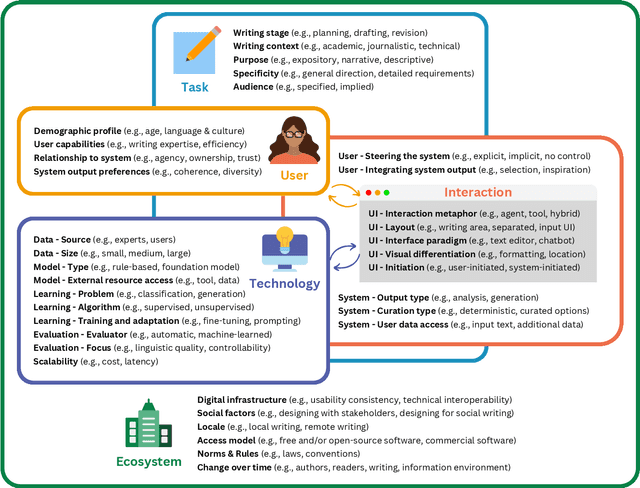
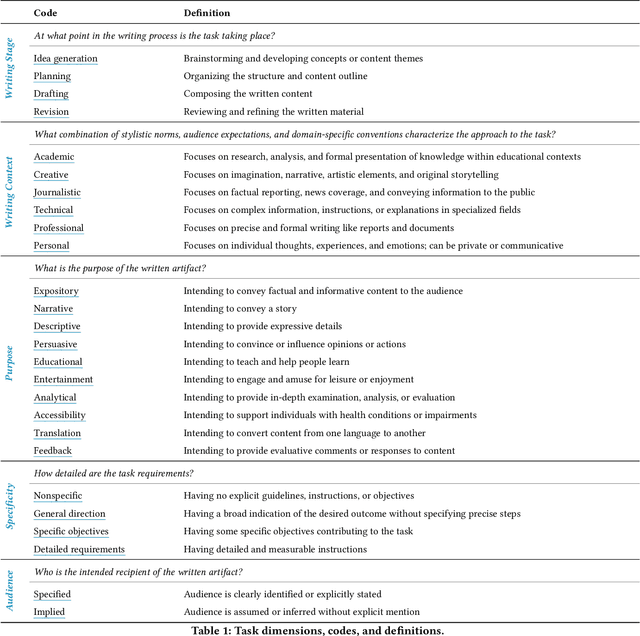
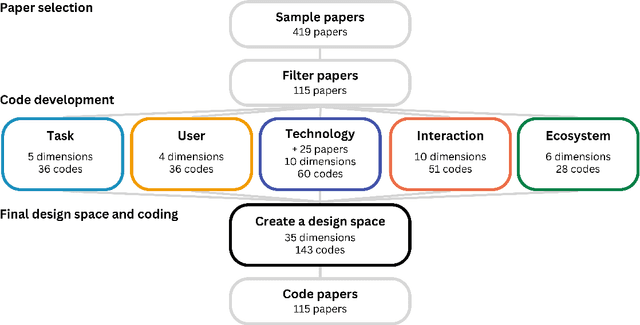
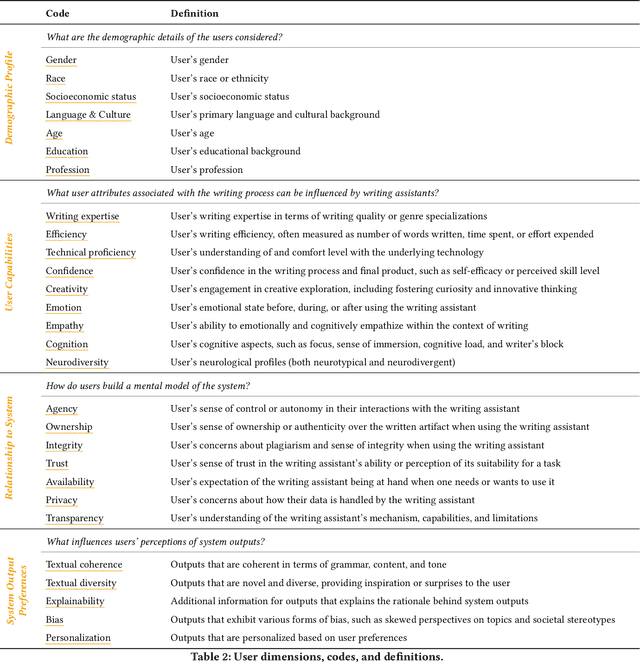
Abstract:In our era of rapid technological advancement, the research landscape for writing assistants has become increasingly fragmented across various research communities. We seek to address this challenge by proposing a design space as a structured way to examine and explore the multidimensional space of intelligent and interactive writing assistants. Through a large community collaboration, we explore five aspects of writing assistants: task, user, technology, interaction, and ecosystem. Within each aspect, we define dimensions (i.e., fundamental components of an aspect) and codes (i.e., potential options for each dimension) by systematically reviewing 115 papers. Our design space aims to offer researchers and designers a practical tool to navigate, comprehend, and compare the various possibilities of writing assistants, and aid in the envisioning and design of new writing assistants.
Homogenization Effects of Large Language Models on Human Creative Ideation
Feb 02, 2024



Abstract:Large language models (LLMs) are now being used in a wide variety of contexts, including as creativity support tools (CSTs) intended to help their users come up with new ideas. But do LLMs actually support user creativity? We hypothesized that the use of an LLM as a CST might make the LLM's users feel more creative, and even broaden the range of ideas suggested by each individual user, but also homogenize the ideas suggested by different users. We conducted a 36-participant comparative user study and found, in accordance with the homogenization hypothesis, that different users tended to produce less semantically distinct ideas with ChatGPT than with an alternative CST. Additionally, ChatGPT users generated a greater number of more detailed ideas, but felt less responsible for the ideas they generated. We discuss potential implications of these findings for users, designers, and developers of LLM-based CSTs.
Tabletop Roleplaying Games as Procedural Content Generators
Jul 15, 2020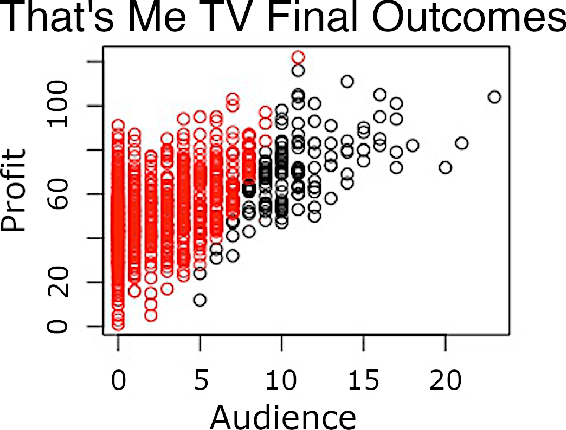
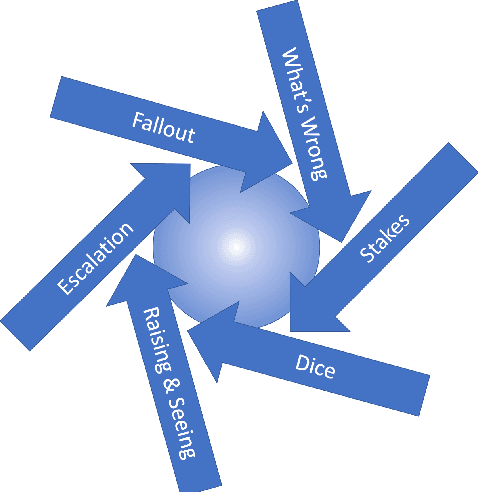
Abstract:Tabletop roleplaying games (TTRPGs) and procedural content generators can both be understood as systems of rules for producing content. In this paper, we argue that TTRPG design can usefully be viewed as procedural content generator design. We present several case studies linking key concepts from PCG research -- including possibility spaces, expressive range analysis, and generative pipelines -- to key concepts in TTRPG design. We then discuss the implications of these relationships and suggest directions for future work uniting research in TTRPGs and PCG.
* 9 pages, 2 figures, FDG Workshop on Procedural Content Generation 2020
 Add to Chrome
Add to Chrome Add to Firefox
Add to Firefox Add to Edge
Add to Edge